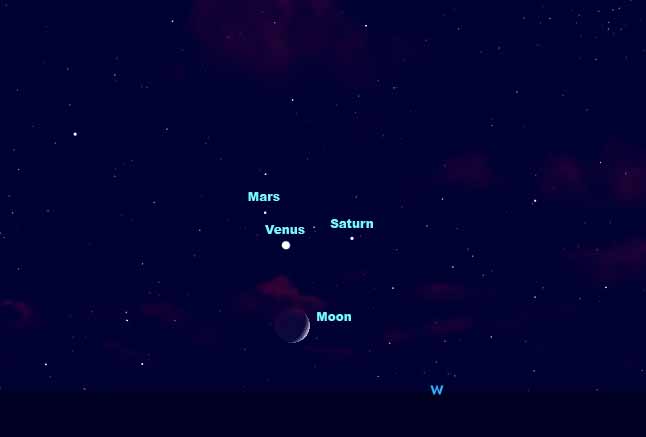Spectacular Meteor Shower and Rare Planet Alignment Coincide

Update Aug. 13, 8:33 a.m ET: See our Perseid Observations story here. The peak of the 2010 Perseid meteor shower has passed. It was a strong peak. Additional meteors should be visible Friday night and Saturday morning.
Update Aug. 12, 4:15 p.m. ET: The International Meteor Organization reports that hourly rate for Perseid meteors has climbed from the low 20s Tuesday into the 30s on Wednesday and now into the 40s. This represents the number of meteors observable per under perfectly dark skies. While the typical person's actual observation will be lower, the rising rate -- fully expected -- indicates the peak tonight and Friday morning will indeed be worth viewing, as predicted. --RRB
The annual Perseid meteor shower is already
"On Saturday night, one bolide lit up the field,"
Vapor trails are striking and sometimes colorful streams, looking
"What has struck me so far about this year are not so much
How the meteor shower works
Get the Space.com Newsletter
Breaking space news, the latest updates on rocket launches, skywatching events and more!
- Galleries:
This story was corrected to reflect the fact that 20 meteors per hour equates to one every 3 minutes.
Join our Space Forums to keep talking space on the latest missions, night sky and more! And if you have a news tip, correction or comment, let us know at: community@space.com.

Rob has been producing internet content since the mid-1990s. He was a writer, editor and Director of Site Operations at Space.com starting in 1999. He served as Managing Editor of LiveScience since its launch in 2004. He then oversaw news operations for the Space.com's then-parent company TechMediaNetwork's growing suite of technology, science and business news sites. Prior to joining the company, Rob was an editor at The Star-Ledger in New Jersey. He has a journalism degree from Humboldt State University in California, is an author and also writes for Medium.









